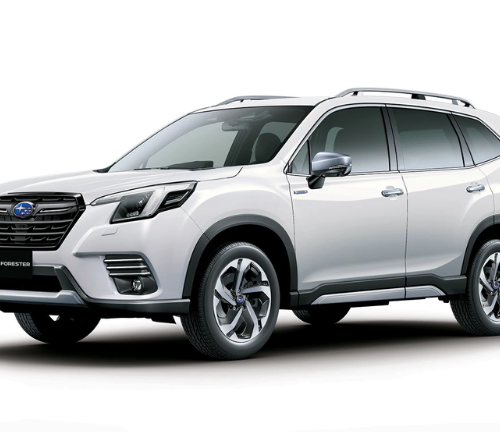For the last two weeks, I’ve been busy trying to find a used car that I can tolerate. Here’s my latest post about the challenges of buying a car with MCAS.
As an Amazon Associate, I earn from qualifying purchases.
Table of Contents
What is MCAS?
Mast Cell Activation Syndrome (MCAS) is a chronic condition that affects all organ systems. It can cause severe, disabling symptoms every day, including potentially fatal anaphylaxis. MCAS often occurs with other chronic conditions like Ehlers-Danlos Syndrome (EDS) and Postural Orthostatic Tachycardia Syndrome (POTS). Managing MCAS is challenging because many healthcare providers are unaware of it, and diagnostic tests can be unreliable. Treatments involve using antihistamines, mast cell stabilizers, and avoiding triggers. Check out this post on how to manage MCAS.
Toxins and MCAS
As I discuss in this post and this post, toxic exposures are one of the main triggers for MCAS. Toxins signal to your nervous system that your body is under attack, and depending on the type of toxic exposure and the longer the exposure goes on, it becomes harder to detox the toxins from your body. Toxic exposures include chemical off-gassing from new furniture, carpet, building materials, mattresses, toxic mold, and especially the materials in car interiors.
My experience with toxins in automotive toxins
Every time I’ve been inside a car repair shop, body shop, or car dealership I react to the chemicals in the air. Some of my biggest triggers seem to be the smell of tires, exhaust from cars being worked on inside a shop that makes its way into the customer waiting room, and the air fresheners used to cover up the smells in car shops.
Some of my worst mast cell activation reactions occurred when I got my car repaired. The first bad experience of this happened when I was getting my car serviced and I sat in the waiting room for about two hours. I started to experience flushing and brain fog immediately, and the continued exposure caused anxiety, hives, neuropathy, tachycardia, migraine, and eventually a panic attack. It took a couple of these experiences before I realized what was happening, and from then on I worked to limit my time spent in car shops to dropping off my car and picking it up.
So, when it was time to buy a car this month I was worried about how to do it without reacting to the toxins inside the car dealership. Typically car dealerships are connected to the shop where cars are serviced, and the air is recirculated within the building. Cars shops also frequently use strong air fresheners to try to mask the odors of car exhaust, oil, and tires.
My goal was to find a used car with low mileage that had already had time to off-gas, while not becoming sick in the process.
Taking my time
We started by becoming pre-qualified for a car loan with our credit union online. That way I knew I would not have to spend time inside a car dealership negotiating financing, and my interest rate was locked in. Stress is another common trigger for MCAS, and having this detail all set ahead of time freed me from worries about the negotiation process, which can be stressful, and eliminated the need to spend time in the dealership.
Next, I combed websites for cars that were:
- No younger than 2022, giving the car a few years to off-gas, while still having “used car certification” so the drive-train had a 7-year warranty and the original manufacturer’s warranty was often still in effect
- Under 30,000 miles on the car
- One private owner (a person, so I knew that the car hadn’t been used as a rental car). Rental cars frequently are smoked in, and smoke stays is absorbed by the interior fabrics. Rental cars are also cleaned frequently and sprayed with air fresheners, adding layers of fragrance and chemicals to the interior.
- History of no accidents
- Leather interior, which tends to off-gas faster than plastic (see below)
- A light exterior paint color such as white or silver, to limit the car heating up in the sun as much
- I preferred that the car not be detailed yet, because car detailing involves solvents to clean out the crevices, which are fragranced and cause me to react.
- The ability to turn off Bluetooth, Starlink, and or Wifi in the car. I react to Bluetooth and EMFs from Wifi and Starlink, so I wanted a car that allowed those services to be disabled.
Knowing I was looking for a very particular car made it important to take my time, look for cars online that met my criteria, and then strategically test-drive them during non-busy hours when I could work with a salesperson outside.
Toxins and new cars
A new car can release a variety of toxins and volatile organic compounds (VOCs) in its first two years, both from emissions and off-gassing of interior materials.
New cars emit a “new car smell” due to off-gassing from plastics, adhesives, and synthetic materials. These include:
- Formaldehyde
- Benzene
- Toluene
- Xylene
- Phthalates (used in plastics and vinyl coatings)
Off-gassing decreases over time but can persist for months or even years. Ventilation helps reduce exposure.
What car interior materials are best?
Leather typically off-gasses quicker than fabric in a car interior, but there are some nuances:
- Leather (Genuine & Synthetic). Leather (especially synthetic/PVC leather) releases volatile organic compounds (VOCs) faster due to its smooth, non-porous surface. Genuine leather is treated with tanning agents, dyes, and adhesives, while synthetic leather (PU/PVC) can contain phthalates and formaldehyde. Leather’s strong “new car smell” (caused by tanning chemicals and VOCs) tends to dissipate within a few weeks to months if properly ventilated
- Fabric (Cloth, Wool, or Recycled Materials). Fabric materials absorb and retain VOCs longer, meaning they may release chemicals gradually over time rather than in an intense burst like leather. Fabric can trap other odors. Fabric seats can absorb VOCs from carpets, adhesives, and plastics, potentially extending exposure. Natural or recycled fabrics (like those in Volvo, Tesla, and Polestar interiors) often have fewer chemical treatments than leather.
Which is Healthier?
- Best option: Organic fabric (wool, recycled textiles, or natural fiber upholstery) has the least toxic off-gassing. Expensive!
- Better than synthetic leather: Real leather off-gasses fewer phthalates than PVC-based synthetic leathers.
- Worst choice: PVC synthetic leather (common in cheaper cars) contains high levels of VOCs, plasticizers, and flame retardants that can off-gas for years.
General Off-Gassing Timeline for Vinyl Car Seats
• First 1-3 months – The strongest off-gassing occurs during this period, as the plasticizers, adhesives, and flame retardants evaporate quickly.
• 3-6 months – VOC emissions gradually decrease, but some chemicals may still linger, especially in warmer climates.
• 1-2 years – Most of the noticeable off-gassing fades, but low-level emissions can continue for several years.
• Beyond 2 years – Off-gassing is minimal, but heat exposure can cause occasional VOC release, especially in hot weather.
How to mitigate toxins in an off-gassing car
Here are some steps you can take to avoid being exposed to toxins in off-gassing cars, no matter the age of the vehicle:
- Use the fan/air recirculation mode less. Bring in fresh outdoor air instead of recirculating VOCs.
- Park in the sun to “bake” out toxins. Heat speeds up off-gassing. When you leave your car in direct sunlight for long periods with the windows open you “bake” the toxins out the car as they are released by the heat. Make sure you are parking in a safe area where you can keep an eye on the car so it doesn’t get stolen!
- Use a high-quality cabin air filter. You can purchase HEPA or activated carbon filters to reduce VOCs and fine particles. You can also use an interior HEPA filter for greater filtration.
- Place charcoal air purifiers inside the car. Activated charcoal absorbs VOCs naturally.
- Use baking soda. Leaving baking soda in an open container can help absorb some off-gassed chemicals.
- Consider installing window deflectors on the car’s windows. This allows you the ability to crack the windows open for ventilation without worrying about rain coming in the windows and provides ventilation of off-gassing when you can’t avoid parking the car in the sun.
Which cars emit the fewest VOCs?
Some cars are built with low-VOC interiors to limit the amount of off-gassing. Some manufacturers use materials that off-gas fewer VOCs include the following list, though they appear only to be offered by high-end manufacturers, which I couldn’t afford:
- Volvo – Uses low-emission, sustainable materials.
- BMW i Series (like iX, i4) – Incorporates eco-friendly textiles and low-VOC leathers.
- Polestar (Polestar 2, 3) – Focus on sustainable, vegan-friendly materials.
- Mercedes-Benz EQ series – Premium EVs with low-VOC interior components.
How I found the car
When I made contact with a car dealership and requested a test drive I asked several questions before proceeding:
- Did the car have a strong odor? I found on weekdays car salespeople were less busy and were willing to go give a car a “smell test” for me. One salesperson actually admitted he didn’t have a good sense of smell and he had three colleagues check out the car before I drove over to see it.
- Did the car have rubber floor mats? Rubber floor mats protect the interior carpet in cars from becoming saturated with water from boots, where mold could grow
- Were they willing to meet me outside the dealership? I explained I had chemical sensitivities and reacted to the smells in car shops and dealerships. I found that salespeople were more than willing to accommodate my request to stay out of the dealerships; they just wanted to make a sale. The salesperson I eventually went with was willing to sit in the car with me to negotiate the price and worked to try to make signing the documents outside the dealership possible.
How it went
The first few cars I looked at were used 2019 Subaru Foresters. One immediately had a strong odor of smoke and an air freshener attempting to cover up the smoke odor, so I rejected it immediately as it had clearly been used as a rental.
Then I switched to looking at Toyota Highlanders because I knew they were extremely reliable and held their value. But after having a couple of Highlanders sold out from underneath me, I went back to Subaru.
Used Highlanders were also in much shorter supply, and the one I initially purchased had evidently been sold at an auction and significantly fixed up to appear like a nice car. I got burned on that Highlander purchase because the dealer had failed to note the obvious damage on the undercarriage. What happened was we purchased a used 2021 Toyota Highlander that met all my criteria and was reported on CARFAX to be free of accidents. However my husband noticed that the car had been realigned six times in the span of a couple of months, so we took the car to our mechanic for an inspection the following day. They discovered significant damage under the car, indicating a major accident. The car had a missing skid plate, scrapes all over the exposed chassis, corrosion where the scrapes had been exposed to the elements, duct tape holding part of the bumper in place, a nicked brake line, and a leaking strut. Luckily we were able to return the car and got our money back. But the experience made me realize that you cannot trust the accuracy of CARFAX reports because a motivated car owner could pay cash for repairs to a car, and thus avoid the damages being reported to CARFAX. And it wasn’t beyond a dealer to fail to disclose damage that might keep a car from being purchased.
That experience also taught me that you can get a “PPI” or pre-purchase inspection on a car you are interested in purchasing.
What I ended up buying
The car I ended up getting was a used 2022 Subaru Forester. I was satisfied with almost all of the answers to my questions, and the salesman was open to and respectful of my need to avoid going into the dealership. We test-drove the car during a snowstorm, so I got a good sense of how the car handles in deep snow. Then we set up a PPI with my mechanic. The salesperson arranged to have the car driven to my mechanic, where I met them, paid for the inspection, and received a full report of their findings. The car had a few minor issues that the dealer was willing to correct before the purchase.
The dealer had been willing to work with me to sign the purchase documents remotely, but the only glitch was that the dealership used a very large electronic tablet for obtaining electronic signatures, and the tablet couldn’t be brought outside for the signing. In the end, I gave my husband a proxy to sign for me, and he closed the deal for me inside the dealership. I waited in our car outside, and then took the keys and drove it home.
The only negative for this car was that it has plastic seats, which as I mentioned above, can continue to off-gas beyond two years. However, I didn’t react when I was in the car, and I took that as a good sign that it was okay for my level of sensitivity.
Regulating the nervous system
The process of buying this car had its ups and downs, and despite my well-laid plans I still experienced considerable stress, some moderate toxic exposure, and at times bad anxiety. My anxiety was especially high when we realized we had been sold a damaged car and would need to ask the dealer to give us our money back. The constant strain of searching for cars, looking at cars, and having dealers sell cars that we had appointments to test drive added up. And despite my preparations and plans for avoiding being exposed to toxins, it was unavoidable at times. There were a couple of days I needed to use the bathroom during car shopping and the only one available was in the car dealership. I was offered test drives in a few cars that completely reeked of smoke and fragrance. The weather was below zero much of the time I was car shopping, and so I spent a lot of cold hours waiting outside or in my car. All of these factors contributed to mast cell activation flaring, and on several evenings I was experiencing flushing, migraines, and hives. I mitigated my symptom flaring with my mast cell stabilizers. I also restarted my Safe and Sound Protocol listening program in the second week of car shopping, and it helped to ease my anxiety significantly.
The bucket theory
The bucket theory simplifies understanding symptom reactions with MCAS. Imagine your body as an empty bucket you don’t want to overflow. Reactions to various stimuli fill the histamine bucket at different rates, forming the total histamine level (how full your bucket is). More histamine means more symptoms. By managing triggers, reducing exposures, and taking medications and supplements, you can control your bucket’s level.
Know your typical symptom progression
Knowing your symptom progression in a symptom flare is the key to developing your rescue plan. This post discusses how to recognize your symptom progression so you can be prepared to address those symptoms.
Get my free ebook, symptom log, and meal plan!
Want a tool to easily keep track of your symptoms? Sign up for my newsletter and you will receive my free 50-page ebook of lower-histamine, grain-free, sugar-free recipes, my free symptom log, and a free two-week meal plan!
Sign up for the SSP!
The Safe and Sound Protocol (SSP) is a listening therapy based on Polyvagal Theory that helps heal nervous system regulation. Many people with MCAS have nervous system dysregulation stemming from infections, toxic exposures, concussions, and trauma. The SSP is an easy-to-use app where you listen to specially filtered music for 30 minutes each day for a 5-hour cycle. Studies show the SSP has a profound effect on mental health and chronic conditions
You can sign up for the SSP here!
Order my book!
Rocks and Roots chronicles my journey solo backpacking the Superior Hiking Trail and overcoming nervous system dysregulation, gut dysbiosis, and Mast Cell Activation Syndrome symptoms to hike 328 miles successfully.
Check out this powerful frequency device
Healy is an individualized microcurrent device I use to reduce inflammation. Check out this post for more about Healy.
Sign up for a session!
I provide one-on-one in-person and remote chronic illness and caregiver coaching and Sacred Self-Healing Sessions based on the Sacred Self-Healing Method, a proven novel co-creative healing modality detailed in my Books.
Click here for more information.
What do you think?
I’d love to have your reply below!
Disclaimer
The preceding material does not constitute medical advice. This information is for information purposes only and is not intended to be a substitute for professional medical advice, diagnosis, cure or treatment. Always seek advice from your medical doctor.




